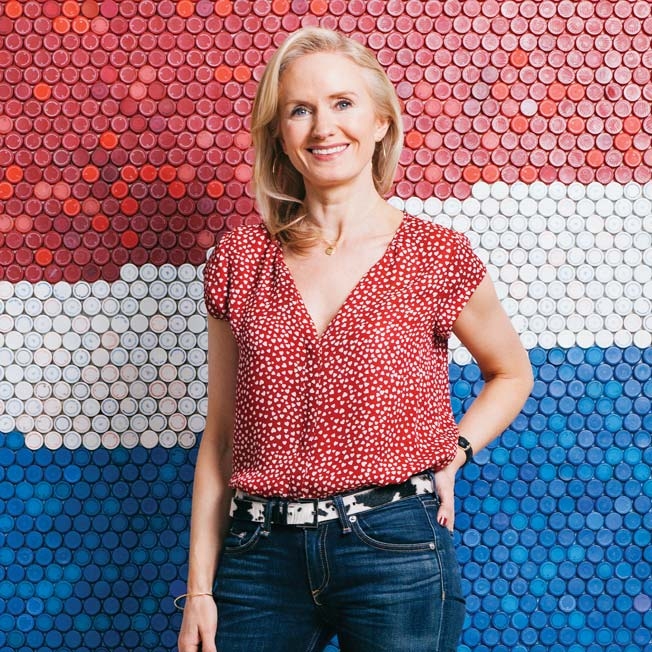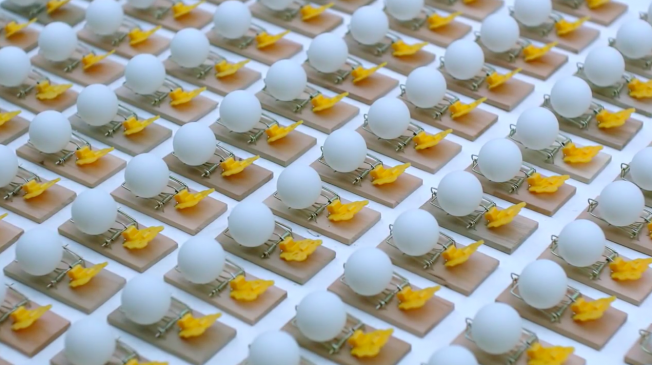Pepsi-owner PepsiCo is spending a huge amount of its budget on the Super Bowl this year.
It has a raft of ads and marketing activity planned for the big game across its portfolio of brands. Not least: Pepsi sponsoring the huge half-time show, which will feature Katy Perry and Lenny Kravitz. (We’ve listed everything we know so far about PepsiCo’s Super Bowl plans at the end of this article.)
Many other brands have started teasing their ad campaigns over the past few weeks as excitement builds toward kick-off on February 1. But PepsiCo says its Super Bowl campaign is the culmination of a season’s worth of activity.
We spoke over the phone with the chief marketing officer of Frito-Lay Ram Krishnan (which is promoting Doritos during the game) and Pepsi’s chief marketing officer for North American beverages Simon Lowden (who is also responsible for the Mountain Dew ads running ahead of the game) about why brands that just dip in and out of the Super Bowl or buy ads as a one-off are missing the real attraction of the big game.
PepsiCo is three years into a 10-year deal with the NFL (but its relationship stretches back 31 years) and this year will mark the fourth time Pepsi has sponsored the half time show (you might remember Bruno Mars and the Red Hot Chili Peppers from last year’s game.) Many of its brands are now intertwined with the NFL: Gatorade has been the official sports drink of the league since 1983 and Doritos has been running its “Crash the Super Bowl” since 2006.
Krishnan told us: “If you spend $3.5 million or $4.5 million on a Super Bowl spot, if you don’t have consumer engagement throughout the whole season, I’m not sure that pays off. The Super Bowl is the big day, but [for us] it’s the culmination of a whole year of effort.”
Lowden added: “There are 185 million domestic fans for football. The great thing about the NFL is that every game is like the FA Cup Final. Every game matters.”
So for PepsiCo brands, Super Bowl activity really starts way back in September. That’s when Doritos relaunched its long-running “Crash the Super Bowl” competition in which it asks consumers to send in their entries for their videos to be made into the brand’s big game ad, for example. The competition received about 4,900 entries, and the finalists’ videos — which can be viewed on a dedicated website — have racked up more than 3.2 billion impressions.
Here's one of the entrants bidding for a Super Bowl ad slot (and a $1 million prize):
Meanwhile, Pepsi’s Super Bowl-related activity has achieved 1 billion impressions since the end of November, Lowden says, although that has been helped by some TV teasers.
But even with the season-long rhetoric in mind, PepsiCo has still forked out a considerable amount on the game itself: The half time show doesn’t come cheap, it has purchased several of those coveted $4.5 million 30-second slots, and that’s not to mention the second-screen paid activity it has planned with Facebook and Twitter. Clearly there’s something about the Super Bowl itself that PepsiCo thinks will pay off?
Lowden tells us: “What we know is we have a 70% year on year increase in better in-store programs with [retailers]. Snacks and beverages together. These are on-shelf displays that we would not get without the NFL program. That’s part of how we measure success.”
Basically, on and around the big game, PepsiCo’s massive marketing program drives traffic into stores. Retailers love this and offer up more shelf space and coveted end-of-aisle slots. PepsiCo sells more products. It’s a perfect circle. But it’s something that can only come out of its brand’s already-strong associations with the NFL — something many brand advertisers simply don’t and likely never will have so long as PepsiCo continues its relationship with the league.
Lowden adds: “The NFL would say their best partner, without a doubt, is PepsiCo. We are three years into a 10-year deal. With that comes enormous trust and planning: We started planning Super Bowl 50 in San Francisco a year ago. We plan together and become part of the brand team.”
With that comes access to shared data about what motivates people to watch games and buy related snacks and drinks. And that’s something that only comes with a relationship, not a one-off punt.
PepsiCo is prepping its “biggest activation ever” during the Super Bowl this year. Here’s what it has planned:
Pepsi
Sponsoring the half-time show starring Katy Perry and Lenny Kravitz, plus a lead-in commercial.
Viewers can even "shop" the half time show, buying the items that appear on screen via platforms like Twitter thanks to a partnership with ShopTV.
Paid-for Twitter Amplify and Facebook activity to promote the second-screen experience throughout the show.
Outdoor advertising all over the Phoenix area, where the game is being played — including mysterious crop circles. Lowden told us Pepsi is playing on the theme of the desert and we should think "Close Encounters of the Third Kind."
On January 18 the brand held a concert with a performance form Nico & Vinz as part of a “Hype Your Hometown” competition.
Doritos
Two “Crash the Super Bowl” ads.
Mountain Dew
11 ads during the Super Bowl pre-game show to showcase two new “KICKSTART” flavors.
Tostidos
The official chip and dip sponsor of the NFL is hosting a Super Bowl party experience from January 28 to February 1 in downtown Phoenix.
And that's not to mention all the in-store and on-pack activity across many more of PepsiCo's brands.







